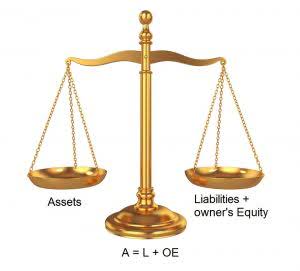
Instead, it requires a bespoke COA, tailored specifically to fit each specific company. The COAs general ledger numbering system available for download here are specifically designed to be compatible with US GAAP and/or IFRS. Obviously, an accountant working at such a company can stop reading (assuming he or she has gotten this far) and visit some other site.
Asset Accounts
How else can one explain that “599 Total Income, 698 Total Cost of Goods Sold, or 699 Total Gross Margin” are listed as accounts when, in fact, they are financial report sub-totals. Digit account numbers can be categorized into various types, each serving a distinct purpose within the financial system. Understanding these types is crucial for implementing an effective chart of accounts. In this case the department code remains fixed at 01 (production department) and the division code changes to either 03, 04, or 00. Typically the chart of accounts numbering logic will follow either a three, five, or seven digit pattern as described below. Changes – It’s inevitable that you will need to add accounts to your chart in the future, but don’t drastically change the numbering structure and total number of accounts in the future.
- For instance, if asset accounts are not consistently grouped together, it becomes challenging to assess the company’s financial position accurately.
- For this reason, the COAs published on this site are designed to be scaled in a way that would suit even a multinational company with hundreds of divisions.
- If the net realizable value of the inventory is less than the actual cost of the inventory, it is often necessary to reduce the inventory amount.
- When the allowance account is used, the company is anticipating that some accounts will be uncollectible in advance of knowing the specific account.
Policies & Reports
- The use of digit codes also simplifies the process of data entry and retrieval, reducing the likelihood of errors and enhancing overall efficiency.
- It allows for easy expansion as the business grows, ensuring that new accounts can be added without disrupting the existing structure.
- Recognizing these key categories not just guides your CoA numbering system but also ensures the financial order and precision.
- Cost of Goods Sold is a general ledger account under the perpetual inventory system.
- For example, if the first digit is a “1” it is an asset, if the first digit is a “3” it is a revenue account, etc.
It formalizes and implements the account numbering system, ensuring consistency in how financial transactions are recorded. This chart of accounts example includes a variety of common account types and their typical numbering. Actual accounts and numbers can vary depending on each business’s specific needs and structure. Larger businesses may have more detailed accounts, including more specific sub-categories. The COA should be tailored to fit the unique accounting needs of each business, capturing all relevant financial activities.
Advanced Techniques for Digit Account Numbering
- Equity represents the owners’ stake in the business, calculated as assets minus liabilities, and includes items like owner’s capital or retained earnings.
- Size – Set up your chart to have enough accounts to record transactions properly, but don’t go over board.
- Different industries have unique financial reporting standards and practices.
- For reasons discussed elsewhere on this site, we only accept such assignments when the client can demonstrate this procedure would not violate any national law or regulation.
- A company selling merchandise on credit will record these sales in a Sales account and in an Accounts Receivable account.
Understanding its structure, types, and best practices is key to maintaining an organized financial record-keeping system. The accounting standards of countries such as the UK, Canada or Australia do not prescribe a particular chart of accounts, so can be considered comparable to IFRS and US GAAP. Discover how general ledger accounts are systematically numbered to organize financial data, improve efficiency, and enable clear reporting. It should be noted that the account code is still 620 which represents the wages expense. Each department now has its own account and the total of the three accounts will represent the total wages expense.

Why is GEM-CAR default structure with 3 digit ?
- The best way to structure a Chart of Accounts (CoA) is to customize it to fit your business while following standard accounting principles.
- A company’s organization chart can serve as the outline for its accounting chart of accounts.
- Single-digit accounts represent the most basic level of categorization within a digit chart of accounts.
- Obviously, since managerial accounting is important to management, the COAs are also designed to be expandable.
The amount in this entry may be a percentage of sales or it might be based on an aging analysis of the accounts receivables (also referred to as a percentage of receivables). A current asset account that represents an amount of cash for making small disbursements for postage due, supplies, etc. The Chart of Accounts is an indispensable tool in the realm of accounting, vital for accurate and efficient financial management.
Sample Chart of Accounts for a Small Company

For example, asset accounts might be numbered starting from 1000, liabilities from 2000, and so on. This systematic approach not only retained earnings aids in the organization but also simplifies the process of locating specific accounts. It allows for easy expansion as the business grows, ensuring that new accounts can be added without disrupting the existing structure.

What is the Chart of Accounts? – Definition
Ensure that your account numbers are sequentially ordered so that your postings are correctly How to Run Payroll for Restaurants added and displayed, especially for non-posting accounts. It is recommended that you leave a gap between account numbers for layout purposes so that you have room to add new accounts later. For example, if you create account number 2500, make your next account number 2600. Shaun Conrad is a Certified Public Accountant and CPA exam expert with a passion for teaching.